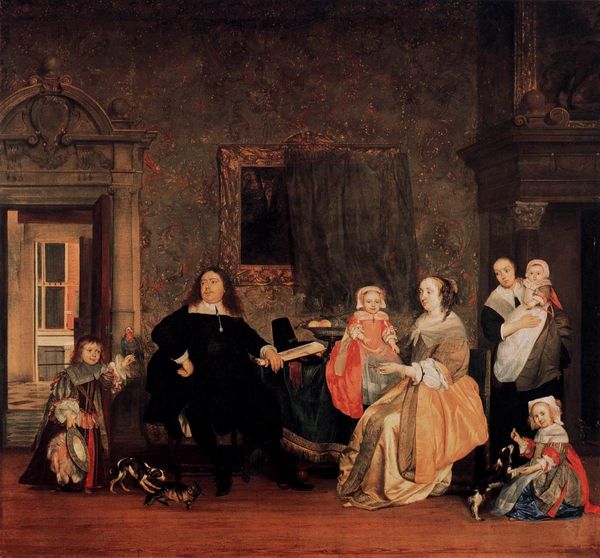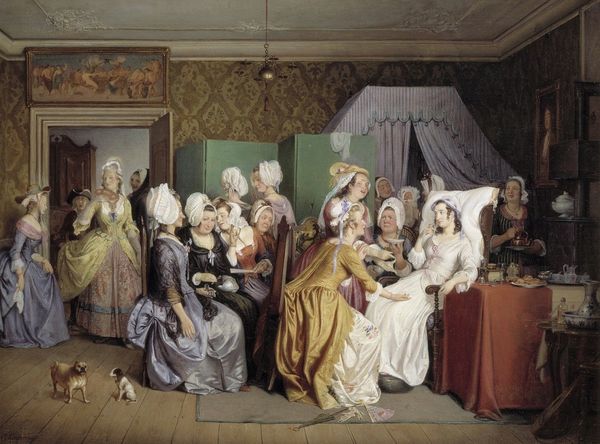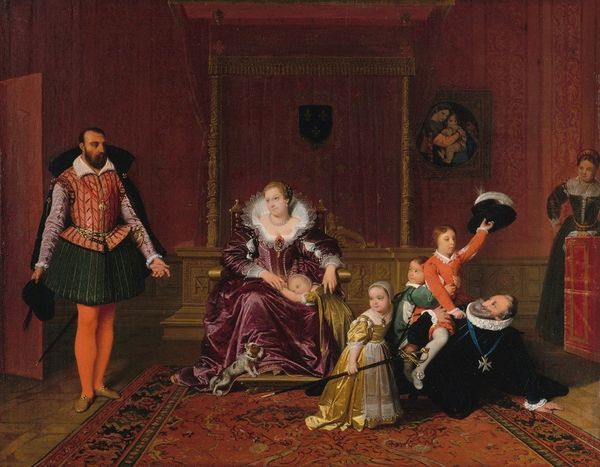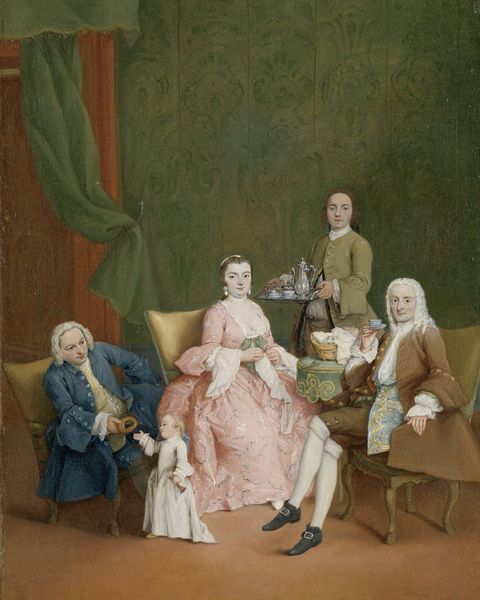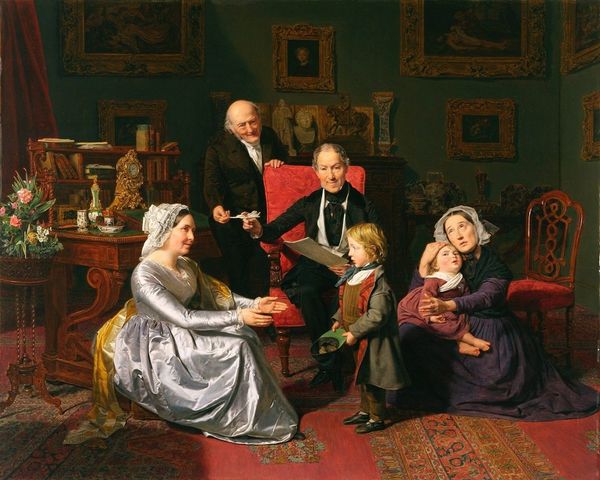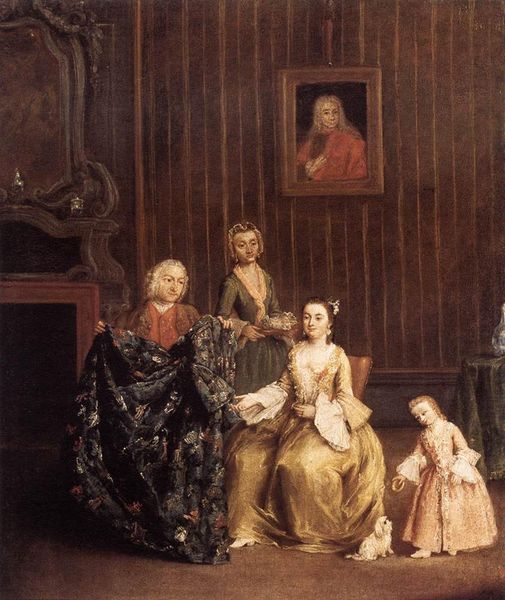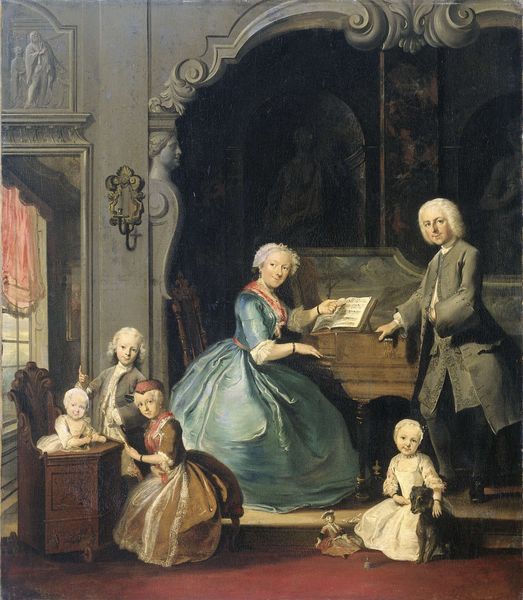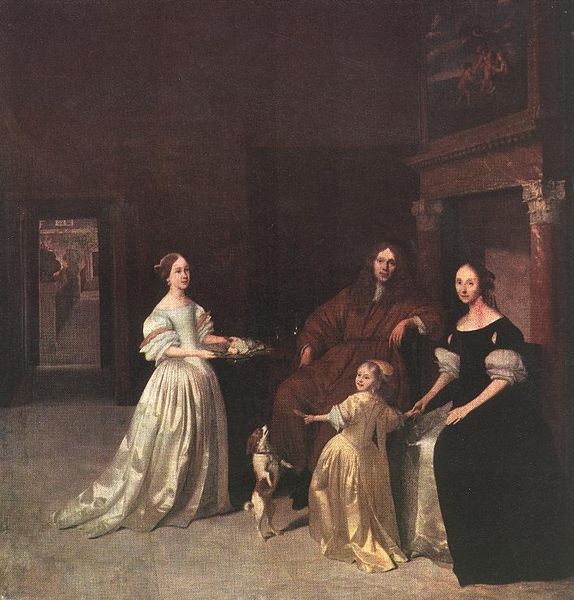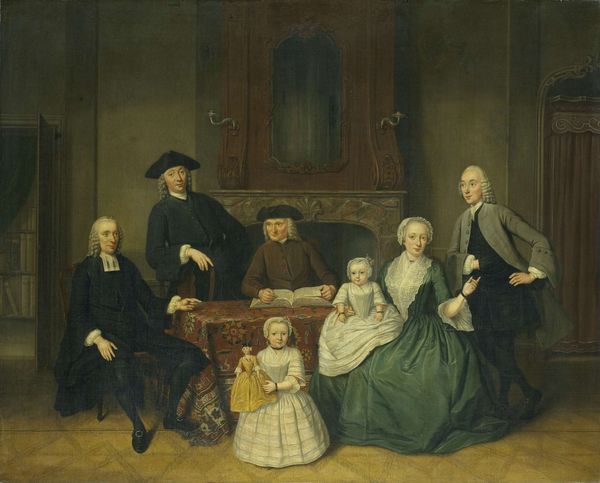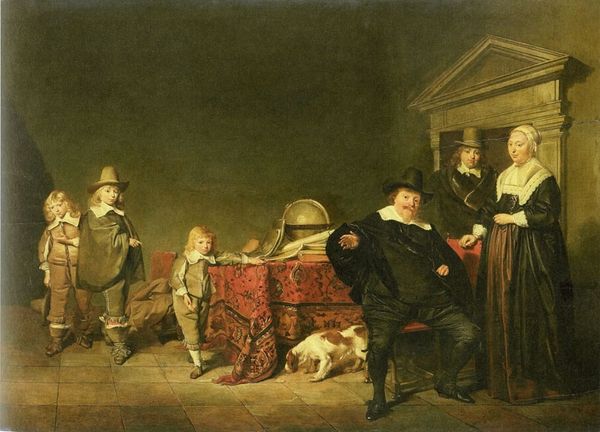
painting
#
portrait
#
baroque
#
painting
#
historical fashion
#
group-portraits
#
men
#
cityscape
#
genre-painting
Copyright: Public domain
Curator: At first glance, there's an undeniable theatricality. It feels poised and self-aware. Editor: Indeed. Here we have Pietro Longhi's "The Little Concert," painted in 1746. It is currently held at the Palazzo Brera in Milan. Curator: The figures are arranged almost like actors on a stage, lit dramatically. Note the clothing—it evokes status, marking social roles that persist across history. Editor: Agreed. Longhi seems interested in patterns; consider how the ornate floral wallpaper contrasts with the crisp lines of the women's dresses and how the mirrored frame repeats the curvature of the settee. There’s a clear play between textures. Curator: The mirrored frame… Do you perceive echoes of classical idealism? The statuette suggests antiquity's standards, observed distantly. Longhi presents them through the looking glass. Editor: Perhaps. I’m struck by the almost uncomfortable elegance. It speaks volumes of power. Take the small boy reading music—he’s utterly confined by that societal frame. Curator: Confined and presented. It underscores themes central to this painting - themes of constructed identity. How we perceive others is often mediated by how we want them to perceive us. Editor: It raises some fundamental ideas. Are we looking at truth, or a curated spectacle? And what does it say about what endures when we try to display an elevated reality? Curator: Art often seeks a universal meaning—but perhaps meaning, too, is an image projected into the ages. The image of class distinctions continues, and that little boy keeps learning his music. Editor: That notion, when combined with its baroque qualities, truly shows how its elements still stimulate conversation.
Comments
No comments
Be the first to comment and join the conversation on the ultimate creative platform.
